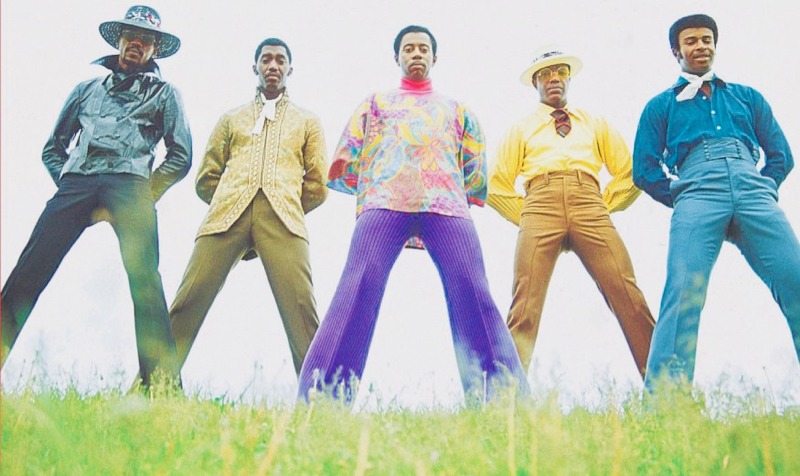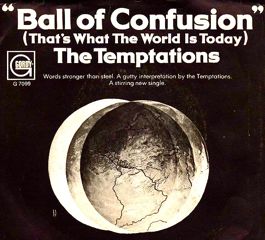
Motown’s hitmaking machine flirted with psychedelic sounds in the late 1960s, in large part a commercial move intended to keep the label relevant and clicking with the beautiful people.
Leading the way were the Temptations, a group in transition after the departure of troubled lead singer David Ruffin.
The group fell under the influence of of Sly and the Family Stone — whose “Dance to the Music” arrived like a thunderbolt in early 1968 — and convinced producer Norman Whitfield to bring some of that funk, chaos and communal vibe to the Temptations’ sound. In particular, the Temps liked the Family Stone’s technique of changing singers multiple times during a song.
The first “psychedelic soul” single out of Motown was “Cloud Nine” (October ’68). Criticized as a pro-drug song, it nonetheless reached No. 6 on the Billboard Pop chart. It sprawled over 3 minutes and 37 seconds, an eternity for soul singles of the time. The Temps, for the record, denied “Cloud Nine” was a drug ditty, but no one believed them.
Then came “Runaway Child, Running Wild” (No. 6, 4:53), “I Can’t Get Next to You” (No.1, 2:51) and (another drug song) “Psychedelic Shack” (No. 9, 3:56).
On the Temps’ psychedelic soul albums, some of the songs ran considerably longer — the “Runaway Child” running time was doubled — and the stereo studio stunts came into play. (AM radio was mono, of course.)
The most successful Temps’ song in terms of the psychedelic aesthetic came last: “Ball of Confusion (That’s What the World Is Today).”
Like the other psychedelic soul songs, it coated the ace Motown songwriting in a wash of sonic special effects. Whitfield’s bag of tricks included double-tracked guitar, wah-wah, fuzztone, reverb, phase-shifting and dizzying stereo imaging.
Many of Motown’s “psychedelic” songs felt like affectations, but “Ball of Confusion” was different. It could go toe-to-toe with Sly Stone at his heaviest.
“Ball of Confusion” worked its magic at a frantic pace, building to some serious head-spinning disorientation. Here was a mind-bending song, among the most radical of Top 10 1960s singles.
The lyrics seemed left-wing political, but they spoke to much of America. In 1968, people simply were overwhelmed and sick of the turmoil.
So many problems to cite, and so the lyrics devolve at several points into a listing of the world’s woes. The following verse was delivered lightning fast by three singers:
Eve of destruction, tax deduction
City inspectors, bill collectors
Mod clothes in demand
Population out of hand
Suicide, too many bills
Hippies moving to the hills,
People all over the world are shouting “End the War”
Key moments: The cool producer’s count-in, the Funk Brothers’ unexpected heaviness, Stevie Wonder’s harmonica, the free-form drumming and, especially, Melvin Franklin’s Greek chorus contribution: the deep-voiced “And the band played on …”
One of the record’s most memorable lines was “the Beatles’ new record’s a gas.” Perhaps a throw-away, but in ’68 it played like an olive branch from blacks to whites.
And the fusion of hippie rock and Motown soul became manifest for one glorious moment.

Don’t forget the glory of the Undisputed Truths’ cosmic version
Inspiring 60s consciousness-raising song. The lyrics were also just as relevant when Love and Rockets did their cover of it in 1985.
Loved this when it first came out .. was so innovative esp for Motown … still love it now